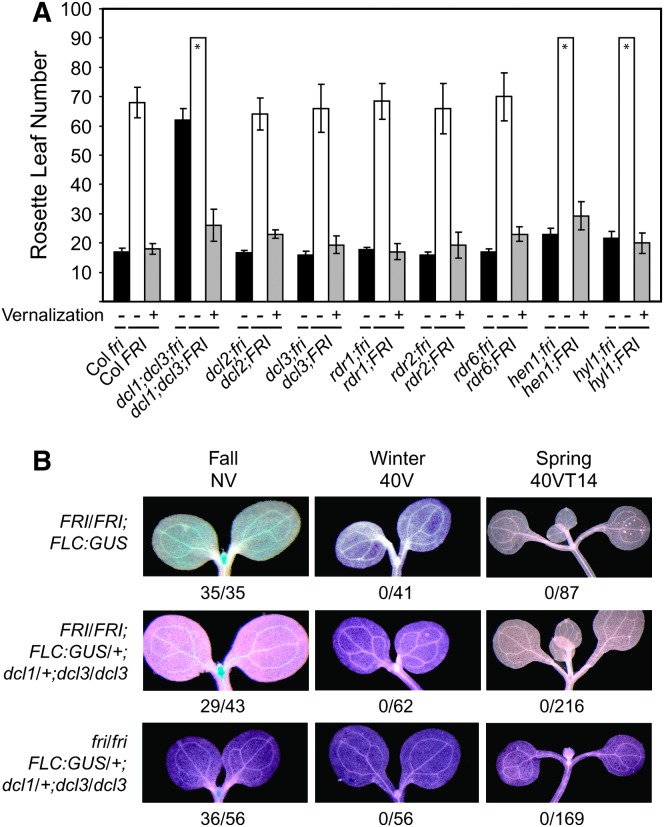Figure 2.—
The dcl1;dcl3 double mutant does not block vernalization in a winter-annual genetic background. (A) Eight mutants with lesions in components required for small RNA biogenesis were crossed into the vernalization-requiring Col FRI genetic background (Michaels and Amasino 1999) and examined for their flowering phenotypes before and after vernalization. All mutants flowered much more rapidly after exposure to 40 days of cold. Data representing the flowering-time phenotypes in Col (which lacks FRI activity) are identical to the data presented in Figure 1A and are presented for comparison. The asterisk indicates that plants produced >90 rosette leaves. Accurate leaf counts for these genotypes were difficult to obtain due to developmental defects in combination with the late-flowering phenotype. Solid bars represent genotypes in Col without exposure to cold, open bars represent genotypes in Col FRI without vernalization, and shaded bars represent genotypes in Col FRI with vernalization. (B) An FLC:GUS reporter line was used to monitor the expression of FLC during a vernalization time course. The FLC:GUS construct consists of a 15-kb genomic region around FLC that rescues the flc-3 mutant. The GUS coding region was inserted into exon 4 of FLC within this construct (Michaels and Amasino 2000). GUS expression was examined in seedlings exposed to no cold (NV, Fall), 40 days of (4°) cold (40V, Winter), and 40 days of cold followed by 14 days of warm (40VT14, Spring). The parental genotypes of populations screened for GUS activity are listed on the left. The number of seedlings with GUS activity relative to the total examined are noted below each panel (seedlings were not selected for the GUS transgene).

